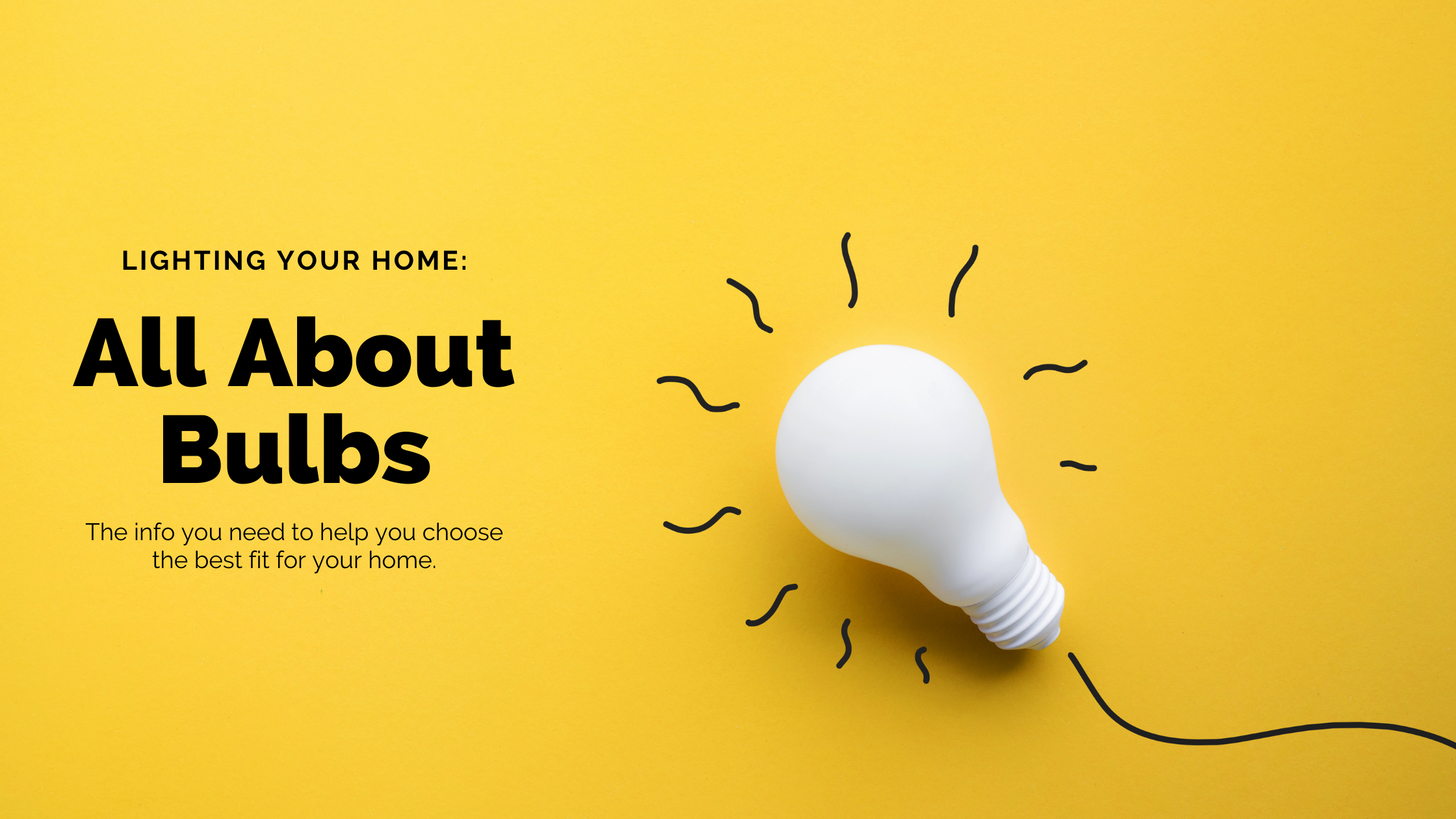
With so many options in the lighting aisles, it can be difficult to know which bulb to choose, especially if you are not familiar with the differences between them (other than the price tag). To help you make a more informed purchase the next time you need to replace a burnt-out bulb, here are some quick facts on the three main types of residentials lightbulbs that you’ll commonly see in the lighting aisle.
Incandescent
An incandescent light bulb is an electric light with a wire filament that is heated until it glows. Manufactured in a wide range of sizes, voltage and lighting outputs, these types of bulbs have a low manufacturing cost and quickly become widely used in households for portable lighting such as table lamps, car headlamps and flashlights since their inception. They are, however, much less efficient than other types of electric lighting, converting less than 5% of the energy they use into visible light, with the remaining energy being lost as heat. This makes them a great choice if you would like to provide a little bit of heat in a room, but a poor choice if you’re looking to save on your electricity bill.
CFL
CFL lights, or compact fluorescent lights were designed to be a more energy efficient replacement of incandescent lighting. These lights use a tube which is curved or folded to fit the space of an incandescent bulb. Compared to incandescent lighting CFL’s use one-fifth to one-third of the electricity and last between eight to fifteen times longer making them far more efficient, cost-effective, and environmentally friendly.
LED
LED lights, or light-emitting diodes are one of the most energy efficient lighting technologies of today. Created to replace CFL’s, residential LED’s – especially those with an Energy Star rating – are so efficient that use at least 75% less energy and last 25 times longer than incandescent lighting. LED’s also differ from CFL’s and incandescent lights in three primary ways:
- Light Source: LEDs are the size of a fleck of pepper, and a mix of red, green, and blue LEDs is typically used to make white light.
- Direction: LEDs emit light in a specific direction, reducing the need for reflectors and diffusers that can trap light. This feature makes LEDs more efficient for many uses such as recessed downlights and task lighting. With other types of lighting, the light must be reflected to the desired direction and more than half of the light may never leave the fixture.
- Heat: LEDs emit very little heat. In comparison, incandescent bulbs release 90% of their energy as heat and CFLs release about 80% of their energy as heat.[i]
While often more expensive at the time of purchase, LED’s are far more cost-effective over time with their longer life-span; meaning if they are a budget-accessible option, they are the clear winner among the three options when it comes to efficiency and cost-savings over time. (Unless of course you’re looking for that heat factor).
[i] https://www.energy.gov/energysaver/save-electricity-and-fuel/lighting-choices-save-you-money/led-lighting

Recent Comments